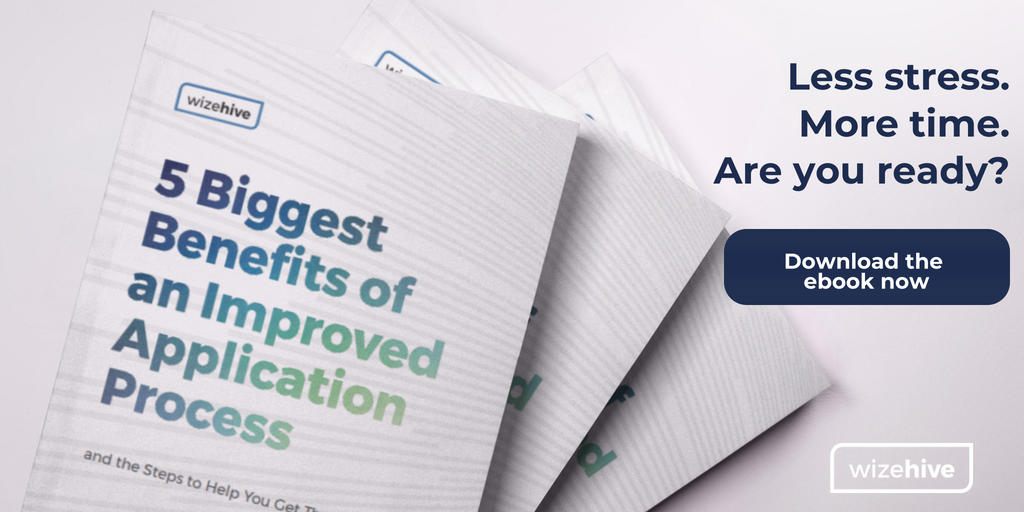Instead of thinking of technology as a barrier to human connection or a tool that makes things as cold and impersonal, consider how today's tools can actually create better funder-grantee relationships.
In grant management, software aims to streamline repetitive tasks, gain efficiencies, and improve the quality of data -- seemingly robotic, but important tasks in the nonprofit world or any business.
But oftentimes, technology is blamed for making things feel less human. With more grantmakers using grants management software than ever before -- a growth of 66 percent since 2013, according to Idealware -- and relationship-building being so key to the grants management process, could something be lost at the sake of creating efficiencies?
Thankfully the answer is no, so long as we utilize grant management software in a way that turns a seemingly impersonal tool into one that works for you and helps you build even better relationships than before. Instead, the question should be how can all the technology available to us be used to create even better relationships with grantees?
Make the most of the CRM in your grant management system
Relationship management is huge in grant management. Make your CRM work for you to enhance your relationships. Many often think of CRM software as a way to keep track of client contact information and to consolidate and distribute marketing materials to them. It is that, but much more, too. For example, many relationships fall by the wayside as a result of being “too busy.” Program your CRM to log activity with grant seekers. If you have not had a meaningful conversation with them in a certain, pre-specified period of time (for example, three to six months), make it a point to set alerts in your CRM and pick up the phone to say “hello” or schedule a lunch. Your CRM can also help you send ongoing updates to your database of grant seekers in a very personalized way, referencing previous conversations or previous grants you may have funded.
When is the last time you remembered every conversation you had with a family member when you saw them at the annual summer family reunion? Most of our brains don’t work like that, but grant management software does. This is just one example of utilizing your CRM to turn potentially cold and impersonal technology and data about a grant seeker into a more personalized, intuitive experience.
Make story sharing a requirement
Hewlett Packard’s “Technology for Teaching” grant initiative requires grantees to submit a private progress report to the company as well as a public report to share the story of the grant’s impact. Grantees are encouraged to be creative and share a grant’s impact by using technology such as YouTube, project websites, and blogs to demonstrate how HP’s investment made a difference. This use of video storytelling can communicate your grant’s story or nonprofit mission in a meaningful, moving way to your board and the community as a whole. Video content is also useful in convincing future potential donors to give to your cause.
Another great example of using story-sharing to enhance the grant experience through technology is telling stories from the field where your grant is making an actual impact. Charitywater.org, a nonprofit that provides clean and safe drinking water to people in developing nations, understands this and does it well. Showcasing the people who work for the nonprofit by telling stories about the experiences they’ve had delivering clean water to people all over the world, the nonprofit shares real impact through an entire section of their website dedicated to telling stories from the field.
How can you apply this to your organization? Like we mentioned before, make storytelling a central part of your application, impact strategy, and marketing efforts. And tell these stories everywhere -- on your website, your foundation’s blog, and through social media. Use photos and video as much as possible to complement your stories. This might sound like a lot of work, but keep in mind that not all stories need to be 750+ words. Done right, a story can be powerful in only a sentence or two. Think of Ernest Hemingway’s six-word novel, “For sale: baby shoes, never worn.”
Build online communities
Surprisingly many nonprofits lack an online social presence, with only 55 percent using Facebook, according to a 2014 PEAK Grantmaking report. What’s more surprising is that only 46 percent publish an electronic newsletter and only 28 percent use a blog. How can your organization share stories, create supporters, and drive further impact if you’re not building these online communities?
Online communities help your organization share information, stay on top of industry trends and encourage discussion or collaboration. Consider implementing a newsletter to further build your grantee relationships. Newsletters have the ability to inspire, connect, and raise money -- and the good thing is that this can all be measured with your grant management technology. After potential grantees receive a newsletter, review how soon you receive applications. Over time, have you seen an increase in the amount of grants awarded or helpful anecdotal feedback? With a little work, you can successfully marry technology with the softer side of grants management aimed at building and nurturing relationships.
